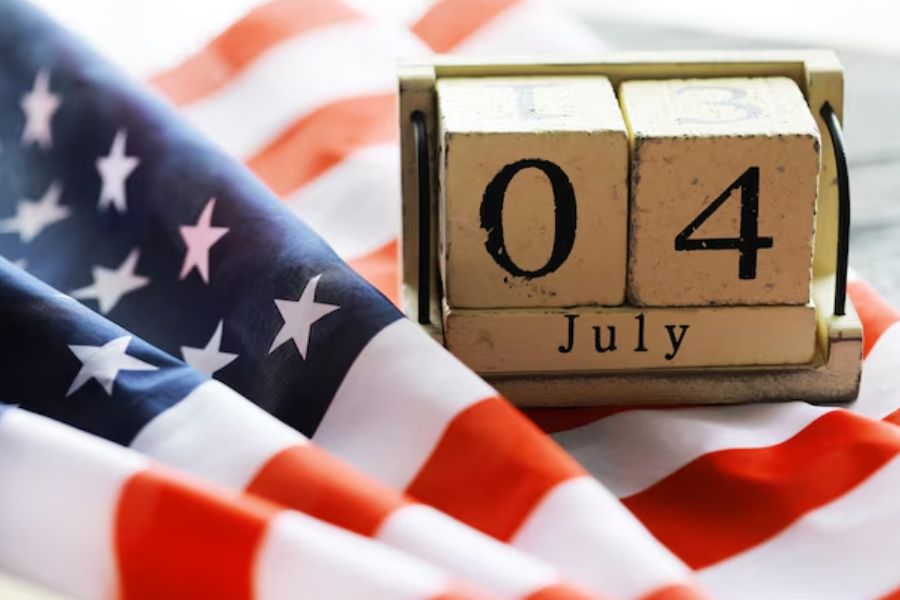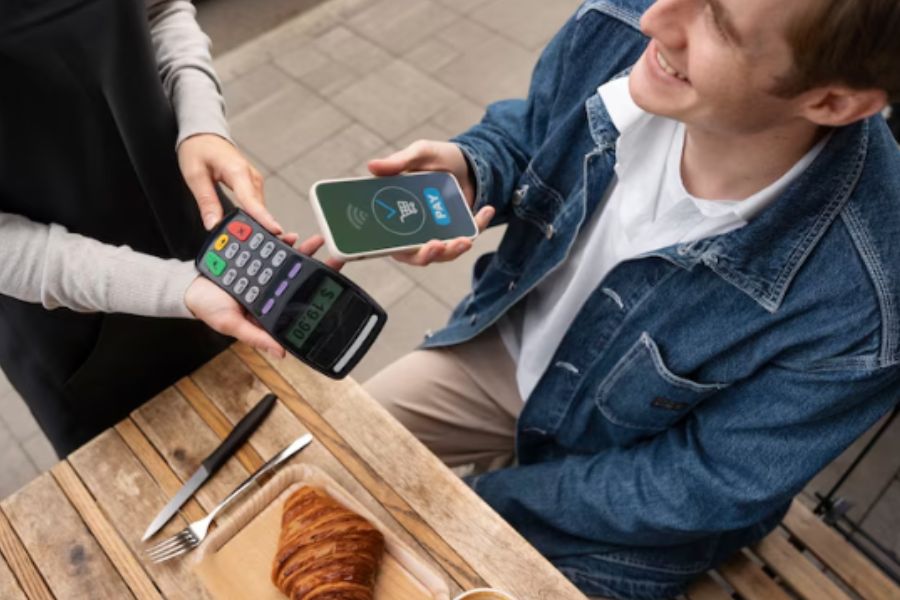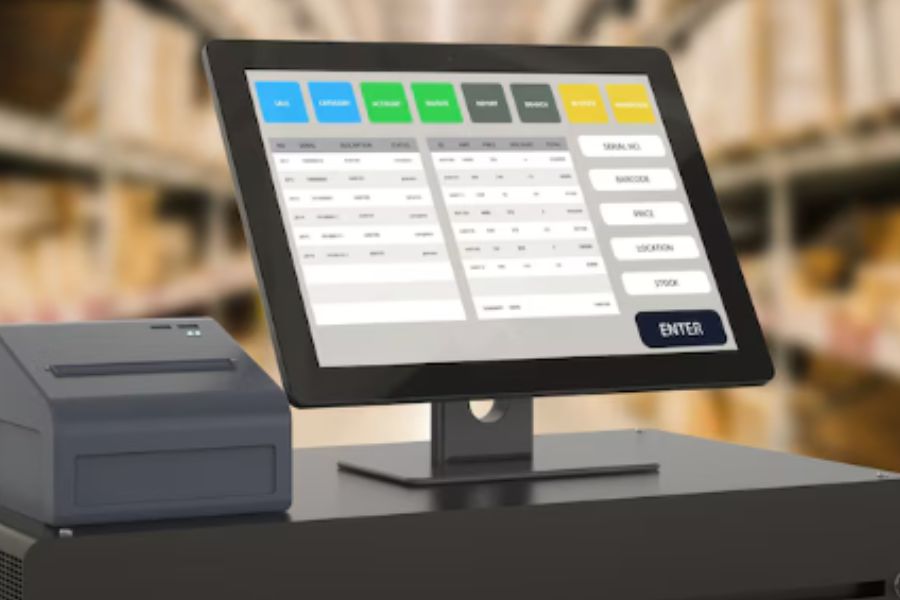The 4th of July sales event is approaching, and retailers are getting ready for the impact of Amazon’s major online shopping extravaganza. With Amazon’s dominance in e-commerce, competing retailers must come up with effective strategies to take advantage of opportunities and overcome challenges. In this article, we will explore key tactics to help retailers stand out and thrive during major sales events, even with the Amazon 4th July impact.
Understanding Amazon 4th July Sales
During the first quarter of 2024, Amazon generated over 143 billion U.S. dollars in total net sales, exceeding the 127 billion U.S. dollars achieved in the same quarter of 2023. One of Amazon’s upcoming major sales campaigns is the Amazon 4th of July Sales.
Understanding Amazon 4th July sales requires a multifaceted approach, considering various factors such as consumer behavior, marketing strategies, product offerings, and competitive landscape. Here’s a comprehensive overview:
Consumer Behavior Analysis
Consumers are often in a celebratory mood during the 4th July, which translates into increased spending on various goods and services.
Amazon caters to diverse consumer interests by offering a wide range of products, including patriotic-themed items, outdoor gear, home appliances, electronics, apparel, and more.
Impulse purchases are common during sales events, driven by attractive discounts, limited-time offers, and the convenience of online shopping.
Marketing Strategies
Amazon employs a mix of marketing tactics to promote its 4th of July sales, including email marketing, social media campaigns, digital advertising, and onsite promotions.
Prime Day, often coinciding with or closely following the holiday, is a major sales event that attracts millions of shoppers with exclusive deals and discounts for Prime members.
Lightning Deals, Deal of the Day, and Prime Early Access offers create a sense of urgency and encourage immediate purchases.
Product Offerings and Inventory Management
Amazon strategically selects products to feature during its 4th of July sales, emphasizing seasonal items, trending products, and high-demand categories.
The company leverages its vast network of suppliers and sophisticated inventory management systems to ensure adequate stock levels and minimize out-of-stock situations.
Popular product categories during the Amazon 4th July sales include outdoor furniture, grills, summer apparel, fireworks, party supplies, electronics, and home goods.
Competitive Landscape
Amazon faces competition from both traditional retailers and other e-commerce platforms during the 4th of July sales period.
Competitors may offer their own promotions and discounts to attract shoppers, leading to price wars and heightened marketing efforts.
Amazon maintains its competitive edge through its Prime membership program, fast shipping options, extensive product selection, and customer-centric policies.
Technology and Personalization
Amazon utilizes data analytics and machine learning algorithms to personalize product recommendations and tailor marketing messages to individual shoppers.
The company invests in technology infrastructure and innovation to enhance the shopping experience, streamline order fulfillment, and improve customer satisfaction.
Post-Sales Engagement and Customer Service
Amazon prioritizes post-sales engagement by providing order tracking, easy returns, and responsive customer support.
Positive post-purchase experiences contribute to customer loyalty, repeat purchases, and positive word-of-mouth referrals.
By understanding these key aspects of Amazon 4th July sales, retailers and consumers alike can gain insights into the dynamics driving one of the year’s most significant shopping events.
Challenges Faced by Small to Medium Retailers Amazon 4th July Period
Small to medium retailers face several challenges during Amazon 4th July sales period, largely due to the competitive landscape and the dominance of larger players like Amazon.
Here are some of the main challenges they encounter:
1. Competing with Amazon’s Promotional Power
- Amazon’s massive marketing budget allows it to launch extensive promotional campaigns, offer deep discounts, and attract millions of shoppers to its platform.
- Small to medium retailers may struggle to match Amazon’s promotional power and reach, making it challenging to capture consumers’ attention and drive sales.
2. Visibility Amidst the Noise
- With Amazon 4th July sales events garnering significant media coverage and online buzz, smaller retailers often find it difficult to stand out amidst the noise.
- Limited advertising budgets and resources may hinder their ability to effectively promote their own sales and attract customers to their websites or physical stores.
3. Inventory Management and Fulfillment
- Managing inventory levels and fulfilling orders efficiently can be a logistical challenge for small to medium retailers, especially during peak sales periods like the 4th of July.
- Scaling up operations to meet increased demand may require additional resources and infrastructure investments, which smaller retailers may struggle to afford.
4. Price Competition
- Amazon’s aggressive pricing strategies, including dynamic pricing algorithms and real-time price adjustments, pose a challenge for smaller retailers trying to compete on price.
- Without the economies of scale enjoyed by larger players, smaller retailers may find it difficult to offer comparable discounts while maintaining profitability.
5. Customer Trust and Loyalty
- Building trust and loyalty among customers is crucial for small to medium retailers, especially when competing against a behemoth like Amazon.
- Amazon’s Prime membership program, fast shipping options, and robust customer service set a high standard that smaller retailers must strive to match or exceed to retain customers.
6. Limited Resources for Innovation
- Innovation and technology adoption play a critical role in staying competitive in the e-commerce landscape. However, small to medium retailers may have limited resources to invest in innovation compared to larger players like Amazon.
- Keeping pace with technological advancements, such as AI-driven personalization or mobile shopping experiences, may present challenges for smaller retailers with constrained budgets and expertise.
7. Navigating Marketplace Dynamics
- Navigating Amazon’s complex ecosystem, including seller fees, algorithm changes, and competition from other sellers, can be daunting for retailers selling on Amazon’s marketplace.
- Small to medium retailers may face challenges in optimizing their product listings, managing inventory, and dealing with seller performance metrics to maintain visibility and sales traction on Amazon’s platform.
Despite these challenges, small to medium retailers can leverage their agility, niche offerings, and focus on customer service to gain a competitive advantage during Amazon’s 4th July sales period.
Building a strong brand identity, fostering customer relationships, and exploring alternative sales channels can also help mitigate the impact of Amazon’s dominance in the e-commerce space.
Promotional Tactics for Retailers to Counter Amazon 4th July Dominance
Cultivating engaging campaigns and news-worthy content
Retailers must continuously innovate to capture consumers’ ever-diminishing attention spans and ignite conversations about their brands. This involves going beyond traditional advertising and exploring creative avenues to engage with audiences. Introducing compelling product lines that resonate with current trends and consumer preferences is crucial.
Moreover, injecting humor into advertising can create memorable experiences that consumers are eager to share with others, amplifying brand reach through word-of-mouth. Additionally, forming strategic partnerships with celebrities or influencers who align with the brand’s values and target audience can provide authentic endorsements that drive engagement and credibility.
By consistently delivering fresh, relevant, and newsworthy content, retailers can keep their brand top-of-mind and foster meaningful connections with consumers.
Using the power of online and offline channels
In today’s interconnected world, success in the retail landscape requires a holistic approach that optimizes both online and offline consumer touchpoints. Retailers must recognize the complementary nature of these channels and develop integrated strategies that leverage the strengths of each.
While online channels offer convenience and reach, offline experiences provide tangible interaction and emotional connection opportunities. For instance, retailers can incentivize group shopping experiences by offering “friends and family” coupons that are redeemable in-store, fostering a sense of community and shared excitement.
Simultaneously, implementing social media-driven discounts or promotions exclusively for in-store purchases encourages customers to visit physical locations and engage with the brand offline. By bridging the gap between online and offline experiences, retailers can create a seamless omnichannel journey that maximizes consumer engagement and drives sales.
Leveraging the in-store experience as a unique advantage
Physical stores present retailers with a distinct advantage over their online counterparts, particularly in an era dominated by e-commerce giants like Amazon. The tactile nature of in-store experiences allows retailers to create immersive environments that captivate customers’ senses and emotions.
By strategically incorporating elements such as interactive displays, product demonstrations, and experiential zones, retailers can encourage customers to explore, engage, and ultimately, make purchase decisions.
Moreover, implementing features like selfie stations or branded photo opportunities not only enhances the in-store experience but also prompts customers to share their experiences on social media, amplifying brand visibility and fostering user-generated content.
By leveraging the unique advantages of physical retail spaces, retailers can create memorable moments that leave a lasting impression on customers and differentiate their brand from online competitors.
Targeting everyday influencers and influencers with expansive social networks
Identifying and engaging with influencers who have significant social networks can greatly impact a retailer’s reach. Developing tailored programs for passionate brand advocates nurtures relationships and taps into their vast audiences. By leveraging these influencers, retailers stimulate conversations around the brand and increase visibility.
Fostering shareable marketing across channels
Retailers should design marketing initiatives that are inherently shareable across various channels to optimize conversations. Integrated campaigns that leverage captivating advertising on platforms like OTT(Over-the-top) and TV prompt social media engagement. Seamlessly integrating both spheres of conversation amplifies messaging and increases the likelihood of consumers sharing content with their networks.
By embracing these strategies, retailers can navigate the competitive landscape alongside Amazon, effectively commanding consumer conversations and securing a thriving position in the market.
How ConnectPOS Can Help You Overcome Amazon 4th of July Impact
ConnectPOS can help retailers overcome the impact of Amazon 4th July sales by offering comprehensive solutions tailored to enhance the in-store shopping experience and streamline operations. Here’s how ConnectPOS can assist retailers:
- Seamless omnichannel integration
ConnectPOS provides a seamless omnichannel experience, allowing retailers to integrate their online and offline sales channels. This enables retailers to offer click-and-collect, buy online, pick up in-store (BOPIS), and ship from-store services, thereby competing with Amazon’s convenience factor.
- Real-time inventory management
With ConnectPOS, retailers can efficiently manage their inventory in real time across all sales channels. This ensures accurate stock levels, minimizes out-of-stock situations, and enables retailers to fulfill orders promptly, even during peak sales periods like Amazon 4th July event.
- Personalized customer experience
ConnectPOS empowers retailers to deliver personalized shopping experiences to their customers. Through integrated customer profiles and purchase history data, retailers can offer tailored product recommendations, promotions, and loyalty rewards, fostering customer engagement and loyalty.
- Efficient checkout process
ConnectPOS streamlines the checkout process, reducing waiting times and enhancing customer satisfaction. With features such as quick product lookup, flexible payment options, and mobile POS capabilities, retailers can expedite transactions and accommodate the increased foot traffic during sales events.
- Data-driven insights
ConnectPOS provides retailers with valuable insights into their sales performance, customer behavior, and inventory trends. By leveraging data analytics and reporting tools, retailers can make informed decisions, optimize their strategies, and stay competitive in the market.
- Integration with e-commerce platforms
ConnectPOS seamlessly integrates with leading e-commerce platforms, allowing retailers to synchronize their online and offline operations. This enables retailers to offer a consistent shopping experience across all channels, drive traffic to their online store, and capitalize on the 4th of July sales event.
Overall, ConnectPOS empowers retailers to overcome the impact of Amazon 4th July sales by providing them with the tools and capabilities to enhance their in-store experience, streamline operations, and compete effectively in the retail landscape.
FAQs About Amazon 4th July
How can retailers offer competitive pricing and deals during online sales events?
Retailers can ensure competitive pricing and attractive deals through various strategies:
- Monitor competitors: Keep an eye on competitors’ pricing strategies and adjust prices accordingly.
- Dynamic pricing: Use algorithms to adjust prices based on demand, competition, and inventory levels.
- Bundle discounts: Offer bundled deals or package discounts to increase perceived value.
- Flash sales: Introduce limited-time flash sales or hourly deals to create urgency.
- Loyalty programs: Reward loyal customers with exclusive discounts or early access to sales events.
What should retailers do to enhance the customer experience during major sales events like Amazon 4th July?
Retailers can enhance the customer experience by:
- Streamlining Checkout: Simplify the checkout process to minimize friction and reduce cart abandonment.
- Personalization: Provide personalized product recommendations based on past purchases or browsing history.
- Responsive Customer Support: Offer prompt assistance through live chat, email, or phone to address any issues or concerns.
- Fast Shipping: Provide expedited shipping options to ensure timely delivery, especially during peak sales events.
- Hassle-Free Returns: Implement a user-friendly returns policy to instill confidence and remove barriers to purchase.
How can retailers leverage data and analytics to inform their strategies?
Retailers can use data and analytics to make informed decisions by:
- Analyzing Sales Data: Review historical sales data to identify trends, understand customer preferences, and forecast demand.
- Monitoring Website Traffic: Track website traffic and user behavior to identify popular products, high-traffic pages, and areas for improvement.
- Segmenting Customers: Divide customers into segments based on demographics, purchasing behavior, or preferences to target them with relevant offers.
- A/B Testing: Experiment with different strategies, such as pricing or promotional offers, to determine the most effective approach.
- Real-Time Monitoring: Utilize real-time analytics to monitor sales performance, adjust pricing or promotions, and capitalize on emerging trends or opportunities.
By leveraging these strategies, retailers can optimize their pricing, promotions, and overall customer experience during major sales events like Amazon 4th July sale.
Conclusion
Retailers must prioritize customer experience, competitive pricing, omnichannel integration, and data-driven decision-making to navigate Amazon 4th July sales event. By implementing these strategies effectively, retailers can not only compete with Amazon but also capitalize on the opportunities presented by major online sales events.
If you want to delve deeper into the information about ConnectPOS and how we will help for your retail business, we encourage you to reach out to us directly.



